#woodshedding
Text
The Unknowable // Philip Levine
Practicing his horn on the Williamsburg Bridge
hour after hour, "woodshedding" the musicians
called it, but his woodshed was the world.
The enormous tone he borrowed from Hawkins
that could fill a club to overflowing
blown into tatters by the sea winds
teaching him humility, which he carries
with him at all times, not as an amulet
against the powers of animals and men
that mean harm or the lure of the marketplace.
No, a quality of the gaze downward
on the streets of Brooklyn or Manhattan.
Hold his hand and you'll see it, hold his eyes
in yours and you'll hear the wind singing
through the cables of the bridge that was home,
singing through his breath--no rarer than yours,
though his became the music of the world
thirty years ago. Today I ask myself
how he knew the time had come to inhabit
the voice of the air and how later
he decided the time had come for silence,
for the world to speak any way it could?
He wouldn't answer because he'd find
the question pompous. He plays for money.
The years pass, and like the rest of us
he ages, his hair and beard whiten, the great
shoulders narrow. He is merely a man--
after all--a man who stared for years
into the breathy, unknowable voice
of silence and captured the music.
#poetry#Philip Levine#American poetry#jazz#music#unknowable#ageing#glory#art#woodshedding#New York City#Manhattan#Brooklyn#tenor saxophone#Sonny Rollins#homage
3 notes
·
View notes
Text
Free straight men fuck with gay fun Every now and again, it looked
Que rico masaje me das hermanastra - Porno en español
Lesbea HD Shy girl lets BFF suck her virgin pussy
Cola jovensita apoyada por pene de maduro
Horny Teen Jemma Masturbates Before The Exam
Brazzers – Hot Milf Jess Scotland Fucks Handsome Store-Manager Danny D
Gina Gerson Porn Store Nude Wank
Hot trannies sharing a guy
Adolescente con vagina peluda se masturba
Sexy clit teasing ts nurse fulfills fantasy
#woodshedded#fanwort#fannell#holytide#discrimination#carbonade#dentimeter#NDEA#Mungo#16bit#ampere-second#domineeringness#A-shaped#praetorianism#teleplasmic#xxii#disordinance#main-topsail#nirvana#shippy
0 notes
Text
youtube
Friday, April 5: Helloween, "Warrior"
R.I.P. Ingo Schwichtenberg (1965-1995)
Helloween’s debut EP was an inadvertent rallying cry for a new movement that, while running in parallel with the rapid development of thrash in America and including many of the same influences, soon became its own thing and has arguably persisted longer than any other subgenre in metal history. But “Warrior” didn’t necessarily signal the birth of power metal: Kai Hansen’s frenzied yelping had little of the precision and soaring glory of Michael Kiske, and the music was just too fast and frantic for anyone to really process what was going on. But Helloween (after a couple years of woodshedding in earlier groups like Iron Fist and Powerfool) was clearly on to something, because “Warrior” was super-fast, ultra-heavy and incredibly catchy in equal measure, and even Metallica wasn’t operating at quite this level (though to be fair they were really on their own level). Most of all, the band’s joy at playing this kind of music was always palpable, as was their hunger, and that made even their most unhinged early material such fun.
#heavy metal#metal#heavy metal rules#heavy metal music#listen to metal#metal song of the day#metal song#song of the day#song#helloween#kai hansen#michael weikath#markus grosskopf#noise records#power metal#german metal#german music#80s music#80s metal#heavy music#heavy rock#metal rock#metal music#listen to music#long live rock#Youtube
9 notes
·
View notes
Photo
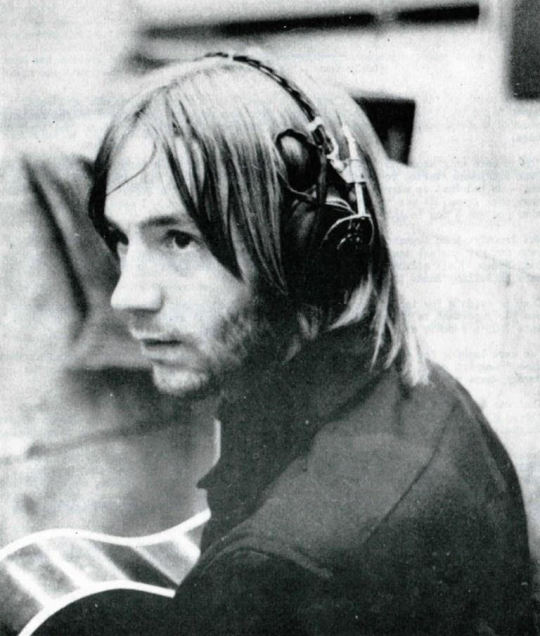
Peter Tork, Headquarters sessions, 1967.
“‘Words was a fabulous song,’ recalled the late Tommy Boyce in 1994. ‘That was one of the first times we thought Peter could actually sing on a record. It’s overlapping. That’s when we thought it would be a good idea to have Peter come in and sing with Micky.’
While Tork played some guitar on the The Monkees’ debut — becoming the first Monkee to appear on one of their records instrumentally — he did not garner any lead vocal duties on that record. For a man to whom music meant everything, Tork was incredibly frustrated by the situation. ‘I did a vocal version of one of the early songs. I walked into the studio, and I said, “How was that?” Everybody said, “Pretty good.” I said, “Okay, well what else?” Everybody sort of like faded away, and the picture went gray, and the next thing you knew somebody else was on the [vocal]. It’s like it didn’t make a dent. I was infuriated. It was really rough for me because I had these ideas about what it was supposed to be and what you were supposed to do and how it was supposed to go. Tommy Boyce, who didn’t have a clue about any of [my feelings], did it the way he was raised to do. He just followed his instinct.
All he kept saying was, “You’re not the Lovin’ Spoonful.” Meaning we hadn’t woodshedded as a band. That seemed to end the argument as far as Tommy was concerned. Tommy really didn’t get it. He just didn’t have any idea of what I was up to. What was I on about? What was I carrying on for? What was going on with me? He didn’t understand. He didn’t have the slightest clue.’” - More of the Monkees 2006 liner notes
“Peter [Tork] was a great musician, great banjo player, but he was mainly from New York, and he had a different process for thinking about songs. It didn’t quite fit with what we had in mind for the group called The Monkees.” - Tommy Boyce, More of the Monkees 2006 liner notes
“I did give Peter a voice audition on Saturday’s Child but I had to finally say, ‘look Pete, I can’t play banjo and you can’t sing. If I played the banjo I’d sound like you singing, I have to erase the tape.’ So Peter left in a huff and came back with Michael, who pulled off his motorcycle helmet, crashed it down onto the console and demanded ‘why don’t you let Peter sing? You guys never let us come to the sessions, it’s just you two with Davy and Micky.’ So I said ‘well that’s the way it should have been in the first place Michael, you know what I mean? You should have stayed with the Randy Sparks Trio.’ In the end we let him do a couple of tracks on his own just to calm the situation down a little.” - Tommy Boyce, Monkeemania: The True Story of The Monkees (1997)
“Instrumentally, I was the most musically accomplished of the bunch. Mostly keyboards and some guitar. But the producers thought I didn't have a very commercial voice, which may have been true.” - Peter Tork, Chicago Tribune, January 19, 1996
#Peter Tork#Tork quotes#The Monkees#Monkees#Tommy Boyce#1967#1960s#60s Tork#<3#'commercial' or not PT's voice was genuine and truthful (and I love it)#bearded Peter#Peter deserved better#he deserved so much better#Michael Nesmith#et al#also as witnessed by any post-1968 Peter vocals on songs#he would have been an excellent vocalist#Team Tork always#and Team Tork Vocals#anyway#love his mind#Chicago Tribune#Monkeemania: The True Story of The Monkees#can you queue it
135 notes
·
View notes
Text


"If you apply a basic routine to woodshedding on guitar you will get to where you want to be. Allow yourself enough time to grow. Tempo, melody, and inspiration are key. " ~ Wayne Frost http://reverb.com/shop/jamesguitarshoppe

5 notes
·
View notes
Text
Tony and rehearshals
The way we did it is as soon as we realized it was happening, Tom, Adrian, and I got together in Adrian's basement and started doing the woodshedding, like, "OK, let's get through what the potential set could be." And then of course, we were exchanging setlist ideas between the four of us. There was so much so much prep time of getting it together that by the time [multi-instrumentalist] Gabe [McNair] and Steve [Bradley] and Gwen joined us, we had already spent so much time together. And then the energy that Gwen brought to rehearsals, the energy that Gabe and Steve always bring, just built on top of everything.
So it was the 3 boys and their prep before G, Stephen and Gabe.
3 notes
·
View notes
Text
Èlia Lucas Quartet — Introspecció (Segell Microscopi)

Photo by Anton Tendero
youtube
Pianist Èlia Lucas’s compositions combine elements of jazz, classical and pop in inventive ways, and her group performs them with passion and conviction on Introspecció. The polished arrangements reflect considerable time woodshedding and performing as a quartet, and upright bassist Tomàs Pujol and drummer Kike Pérez also play together in Trio Nilo, sometimes joined by sax player Edu Pons, while Pons and sometimes Lucas play in Pérez’s quintet. There are undoubtedly further connections, and these musicians’ familiarity and comfort with each other are evident here. As so often in jazz (and other kinds of music), a tight-knit scene makes for tight and generous interplay.
On the more obviously classically influenced tracks, such as “Intro” and “Bach inspirations,” which begins with a telepathic sax and piano duo and then transitions from the baroque to jazz, the members of the group well demonstrate their chops and establish the mood. These and the other tracks are generally mid-tempo and unfold gradually. “Cercles” is built around a pair of solos by Pons with some inspired soloing from Lucas and Pujol in between. And “Natural” wraps things up elegantly with Pons starting out alone on soprano and gorgeous soloing from Lucas and arco from Pujol.
The quartet is also capable of generating some fire. From a gentle start, “Dreamin’” (which deserves a better title) builds up a ferocious head of steam thanks to some great skronk from Pons and powerful tom and cymbal work by Perez punctuated by a too-brief solo from Pujol. Even “Bach inspirations” generates considerable force in its final minute. “Línies” features another quick solo from Pujol and a nice shift around the mid-point when Pons at last joins the other three to deliver a solo that, unfortunately, is swallowed up in a fade-out at the end.
The blend of chamber jazz with freer elements is consistently effective across Introspecció. The sound benefits from the clarity of the recording as well as the sympathetic ensemble playing. Lucas’s compositions are accessible and memorable, and the band plays them with the familiarity of standards. This record is also further evidence of the vitality of jazz in the Iberian Peninsula.
Jim Marks
#Èlia Lucas Quartet#Introspecció#Segell Microscopi#jim marks#albumreview#dusted magazine#jazz#classical music#spain
6 notes
·
View notes
Text
feel kinda bad for not being a very horny person cause you sweethearts are flirting with me fine. but sometimes it feels like you are daddy wants to take you to the woodshedding me
4 notes
·
View notes
Audio
Shakti - Mohanam - John McLaughlin, Zakir Hussain & co. reunite for first new Shakti studio album since 1977, this being the advance single
Born of an immense degree of both soul-searching and woodshedding, Shakti emerged in the early 1970s – shattering the barriers between Eastern and Western music with an ecstatic, soulful hybrid that knowingly embodied both traditions while setting out for uncharted musical terrain. Shakti’s catalyst was the meeting of guitarist and composer John McLaughlin and tabla virtuoso Zakir Hussain. Both had already achieved a certain degree of notoriety in their musical domains. John, through his association with Miles Davis and his immensely successful group The Mahavishnu Orchestra: Zakir through his amazing classical work and his collaborations with the California music scene. Hussain and McLaughlin had become friends in 1969 and met musically one evening at the house of the late great Ali Akbar Khan. To quote McLaughlin, “It was a revelation playing with Zakir”. McLaughlin subsequently began studying the Vina with Dr. S. Ramanathan and through him met with Dr. L. Shankar himself a head at the South Indian Music department at Wesleyan University and by 1973 had brought Zakir, violinist L. Shankar and the head of the percussion department Ramnad Raghavan playing the mridangamfor the very first time. It was at once, a marriage of the tonal and rhythmic intricacies of classical Indian music with the immediacy and soul of Jazz. This first formation of Shakti recorded its first live recording in 1975 and released in 1976.
Their unprecedented music awakened subsequent generations to the rich, untapped potential of such pan-cultural fusions and helped to create what is now known as “World Music.” While the initial lineup of Shakti disbanded in 1978, Hussain and McLaughlin have periodically resurrected the Shakti group for live performances and concert recordings – but have not released a new studio album since 1977’s Natural Elements…until now.
“Mohanam” – available for streaming/download – is the first new studio music from Shakti in more than 45 years. Drawn from the upcoming album This Moment (to be released on CD and vinyl in the summer of 2023 by Abstract Logix), the track glimmers with optimism and wonder as it moves with unhurried grace through a series of instrumental movements that acknowledge Shakti’s formidable legacy while proposing new routes. “‘Mohanam’ is a joyful piece,” explains McLaughlin, “and joy is the inherent nature of the Shakti group.”
The lineup featured on “Mohanam” – McLaughlin (guitar) and Hussain (tabla) are featured alongside vocalist Shankar Mahadevan, violinist Ganesh Rajagopalan, and percussionist Selvaganesh Vinayakram (son of original Shakti ghatam player T.H. “Vikku” Vinayakram). On “Mohanam,” Hussain and Vinayakram are also featured on konokol – a traditional and demanding form of Indian vocal percussion.
11 notes
·
View notes
Text
Character Names + Meanings
Bebop Bayou Edition!!
Saw this little writeblr thing on @gummybugg's account and I thought hey, I'll give it a shot too. A lot of the names I picked for my characters in Bebop Bayou Tales was very deliberate, so this feels like a good excuse to showcase that.
Rules: Make a list of your main OCs and find out the meanings of their names. Then write down their definition and whether or not you think the definition fits their character.
^ These are the normal rules for this game, but like I said, I was very purposeful in my picks so this doesn't exactly apply to me. heh
Rina Woodshed: The first character I wrote and drew from BBT. She started off as a simple OC to pal around with my friends' OCs, and as we collabed and came up with a bigger setting, I took a small piece of that collab setting's pie and had fun with it, building it up slowly. That became Bebop Bayou! But enough about that, though. Let's talk names!
"Rina" was taken directly from the subfamily "Alligatorinae" which wikipedia described as such:

In addition, "Rina" means "joy; singing" in Hebrew, two things I feel are very key to Rina as a person, especially with her family, who all have very musically-based names. Speaking of which, her family name "Woodshed" is in reference to the musical (specifically Jazz) lingo for woodshedding, which is all about practicing your skills in a private place. In Jazz specifically, woodshedding is said to be how one forms the basis of their improvisational skills. I thought this would be a perfect fit for Rina, since she's someone who always thinks on her feet.
Now onto the rest of her family...
Crush Woodshed: "Crush" is a piano term. It's in reference to a type of grace note (small note symbols - with a crush note identified by its slash mark). Grace notes are basically notes played just before the next note as a kind of musical accompaniment, if that makes sense. I'm not a musical expert though, so if you'd like to learn more about these kinds of notes, consider the following video:
youtube
Part of what made me choose "Crush" for Rina's dad is the idea of it being a musical accompaniment made me feel like he'd be the kind of person that stuck close to others, especially family. He may not be at the center stage of things, but he'll always be with his family through thick and thin.
Shelly Woodshed: Shelly's name is derived from another musical term called a "Shell." A Passion For Jazz defines this term as "A two-note structure in the left hand, consisting of the root and one other note, usually the 7th, the 3rd or 10th, or the 6th. A simple, open left-hand style, used by Bud Powell and many of his imitators and followers." Basically, a shell chord is a simple two-note chord that brings clarity to a piano chord, as playing a full chord can sometimes get a little dark and muddy. If you'd like to see this explained and played out, here's another vid:
youtube
Maybe it seems odd to use this as a basis for a name, maybe not, but my thinking was that Shelly is someone with a very strong, defined voice among the family. While Root is the father, Shelly is the real head of the house, and often what she says goes. I think the idea of her name being related to a clear and defined chord made a lot of sense, you know? And naturally because of the shell chord's connection it, we come to the final name among the Woodshed family...
Root Woodshed: The late first son of the Woodshed family. Root's name is purposefully symbolic, both for being a foundation for Rina's character and primary motivation, but also being a really big part of what Rina's family is like now. Root was the original protector of the bayou, after all, and his loss is still subtly felt by his family and the bayou as a whole even years later.
A Passion For Jazz defines a root as "The fundamental pitch on which a chord is based, from which the chord takes its name, and to which the other tones of the chord are referred to intervallically the third, seventh, and so on, regardless of their actual intervallic relationship in an actual keyboard voicing. Note that the root is often absent in Jazz piano, both in voicings and in r.h. patterns and lines. This avoidance of the obvious is part of the character of Jazz."
Maybe it's a bit mean, but when I originally read this term, it's what inspired me to come up with the backstory about what happened to Root and how this affected Rina. Someone important and whose influence is always felt, but also someone who isn't in the picture anymore... A bit sad, perhaps, but very important.
While I'm here, I'd also like to talk about the location/title for the stories, Bebop Bayou itself.
Bebop Bayou: Now of course, a bayou is a familiar term for those who live in places like Louisiana. If you want a classical definition, it's basically a marshy outlet of a lake or a river. Something like this:

As for "Bebop", it's a style of jazz that was developed during the 1940s, which was (at the time) a radical new approach to jazz that included all 12 notes of the chromatic scale and led to very complex improvisational music. It wasn't dance-style music like Swing, but something that required much closer listening. Of course, I'm probably butchering the explanation, so instead, I'll share a song to give you a feel for what bebop is like.
youtube
Now mind you, I don't think bebop is associated with Louisiana (and is musically distinct from New Orleans-style jazz), but jazz as a whole is a big part of Louisiana culture, which is where I drew a lot of inspiration for the setting from, and I just really like alliteration, you know?
In any case, I feel like I've rattled on too long regarding name meanings. If you have a special reason for picking names of your OCs, maybe give this a shot yourself! And even if you didn't have a specific reason for picking the names, you can look into the meanings of your character names and decide for yourself how much or how little they fit them. Obviously a super long post with vids and other stuff isn't required for this little game, so just have fun however you see fit with it. XD
#writeblr#writing game#tag game#my ocs#character names#rina woodshed#bebop bayou#bebopbayoutales#do you like jazz?#what's your favorite jazz song?#Youtube
2 notes
·
View notes
Text
Woodshedding
Practice makes perfect, or that’s what they say
I follow the rules, I keep perfect time
The painstaking ritual of cleaning each note
The room resonates with a sweet chalumeau
80 beats, 90 beats, one hundred, one-twenty
Is this good enough yet? Will I ever be ready?
A mirror before me to catch my mistakes
I’ll stay here for hours if that’s what it takes
A wristful of carpals can take the fall
Mind over matter; I need to get better
The ache in my joints is the sign of success
This is what it takes to be the best of the best
Every squeak means that I’ve failed them all
Each slip of the fingers more dirt on the grave
Of the bright young girl who had so much potential
No one predicted my looming eventual
Downward spiral. They never told me that passion
Wasn’t enough to escape the poison of profession
I need to be better. I need to do better.
I need to be impressive. Nothing else matters.
6 notes
·
View notes
Text

The Rolling Stones - Surrey Rehearsals 1968
I love these grimy lo-fi rehearsal tapes because at moments I feel like you could pass them off as some scuzzy new Royal Trux-inspired band from Pittsburgh on Bandcamp. But no, ladies and gentlemen — it's the Rolling Stones! Or three of them, anyway. On this recording, we get to eavesdrop on Mick, Keith and Charlie woodshedding in Surrey in the late winter of 1968, figuring out what they're going to do next after the pop-psych fantasia of Their Satanic Majesties Request. One riff is especially promising — something that would very soon become "Jumping Jack Flash." Listen in, it's a gas gas gas.
14 notes
·
View notes
Text
youtube
1 HOUR OF SPOOKiE MUSIC AND LIVE MIXED VHS MEDIA MULCHED FOR YOUR PLEASURE!
GOTH VIBES FOR THE SUMMER I’M POSTING THIS IN!
A HALLOWEEN SCARETASTROPHE!
BIG OL’ PHOTOSENSITIVE EPILEPSY WARNING!!!
The last mixtape I was able to do during the pandemic shutdown! The audio is a lot of early 2000s Animal Collective, their side projects/friends, and some newer spookie stuff I've found. This was the last time I did datamosh feedback before switching computers and having that setup break. A fun one to throw on at ur basement show :)
Tracklist
Berserker//Jane
Sunrise//Excepter
c_usv2//Sophiaaaahjkl;8901
Reptilian Space Beings, Shapeshifting Bloodsucking Vampires//Eric Copeland
La Cucaracha//Black Dice
Acid Baby//Nmesh
Woodshedded//Leslie Winer and Jay Glass Dubs
Face Mask//Terrestrial Tones
Two Sails On A Sound//Animal Collective
The Sailor//Terrestrial Tones
Fun Dink Death//Eric Copeland
Originally made for Deaths dynamic shroud halloween mixtape swap 2021 but I got really busy and didnt send it out and the guy disappeared and T_T
#jane#excepter#sophiaaaahjkl;8901#eric copeland#black dice#mnesh#jay glass dubs#terrestrial tones#animal collective#vhs#80s#glitch art#halloween#spooky#goth summer#i need to make these again#vaporwave#lofi aesthetic#lofi#video art#found footage#video collage#trans artist#Youtube
2 notes
·
View notes
Text


“I saw somebody ask Steve Vai recently: what did he think of Kurt Cobain’s guitar playing, and it was a great answer. He said, ‘Kurt Cobain knew exactly enough to be able to say what he wanted to say.’” Frusciante continues.
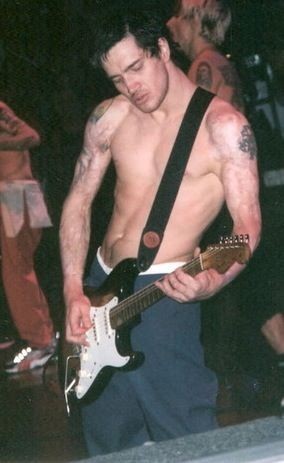

“One person has ‘this’ to say, and another person has ‘that’ to say. For Al Di Meola to say what he had to say, he had to be able to pick every note really fast. But for Robert Johnson to say what he had to say, it had nothing in common with that kind of technique at all.
“I knew that what mattered was that you were feeling something and saying something. And so while I always was interested to hear different people’s perspectives, I did always know that that had to be the center.”
I actually told Steve Vai that story about five years or so ago, and he made me feel so good about it
John Frusciante

While that lesson was the last Frusciante would ever take – and initially dented his creativity, as his woodshedding put a halt to his songwriting efforts – the story ultimately had a happy ending. Not least when he relayed the tale to Vai himself.
“I actually told Steve Vai that story about five years or so ago, and he made me feel so good about it,” he beams. “He told me a story about a music teacher that he had who fucked up his brain for a while. Oh man, I can’t tell you how good it was to have Steve Vai sympathize with my position in that.”
To bring the whole story full circle, Vai himself is a fan of Frusciante’s playing – in particular, his take on Zappa’s material.
Last year, Vai told Guitar World, “John has always been an MVP in any band he performs with. He always writes the perfect part, and his passion for vintage recording gear captures his tone magnificently.

“Perhaps one of my favorite performances by him is an obscure one, Inca Roads by Frank Zappa, performed solo live. Anyone who can play it is a Jedi boss! I never had to play that part when I was with Frank, thank goodness.”
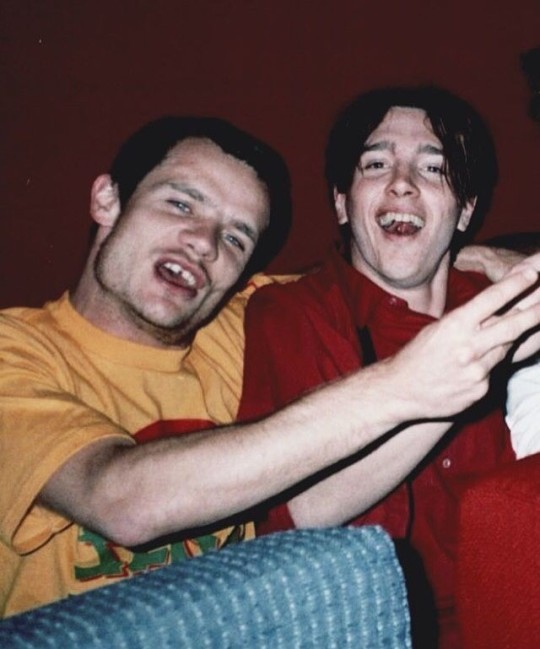

5 notes
·
View notes
Text
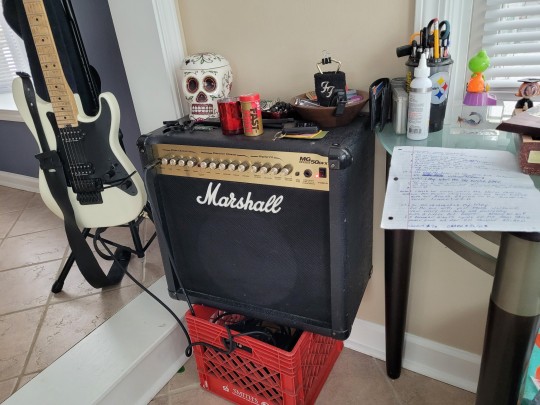

I was just Woodshedding and learning lyrics..I Shredded a Solo So Fucking Awesome👍🏼 The Master Volume Knob Blew 🗯Off my Amp..Stuck on 11👍🏼🔥
0 notes
Text
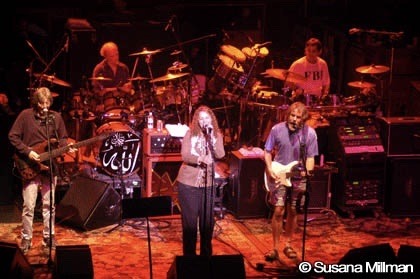
Joan Osborne Remembers When She Was Dead
- “I was struck over and over again with how deep and soulful the songs were,” she says of the 2003 tour with the former Gratefuls
When Joan Osborne joined the Dead for a one-off tour in 2023, she wasn’t familiar with the music and had to learn quickly.
“It was like Grateful Dead boot camp,” Osborne told Relix magazine of days spent woodshedding that night’s material.
“So I was learning the songs and learning my parts continually throughout the tour.”
Osborne has a specific memory of singing “Stella Blue” under a full moon on stage at Red Rocks and “everyone was under the spell of this song, myself included.”
But it was about songs - plural - for the singer.
“Digging into that catalog and learning the songs, I was struck over and over again with how deep and soulful (they) were,” Osborne said. “That was sort of my life-vest, if you will, in being thrown into this scene. The songs were what I clung to. They were beautiful, mysterious and wonderful.”
More than two decades later - and after a few years of working with Phil Lesh & Friends - Osborne the songwriter continues to draw inspiration from “Ripple” and a specific Robert Hunter line therein.
“It’s a hard thing to write songs, and you’re exposing yourself,” she said.
“You can allow yourself to be overwhelmed by fear and doubt. … Then that simple phrase, Let there be songs to fill the air just brings me back to that feeling of, ‘It’s OK, I have permission to do this and this breath in my body is to make songs with.’ It’s something that is a real touchstone for me.”
4/14/24
#joan osborne#relix#the dead#grateful dead#robert hunter#jerry garcia#bob weir#phil lesh#bill kreutzmann#mickey hart#jeff chimenti#rob barraco#dark star orchestra#jimmy herring#widespread panic#phil lesh & friends
1 note
·
View note